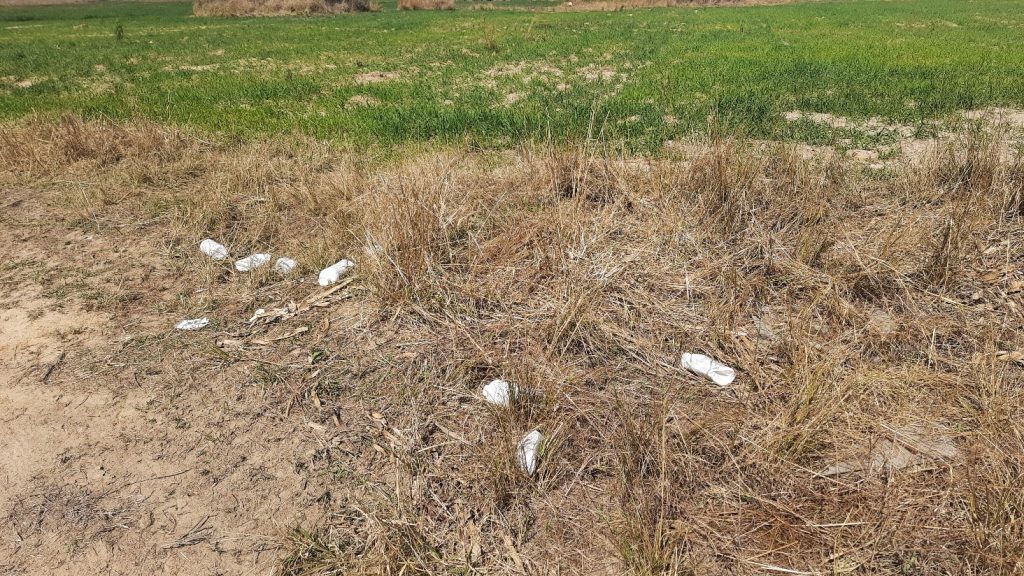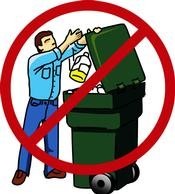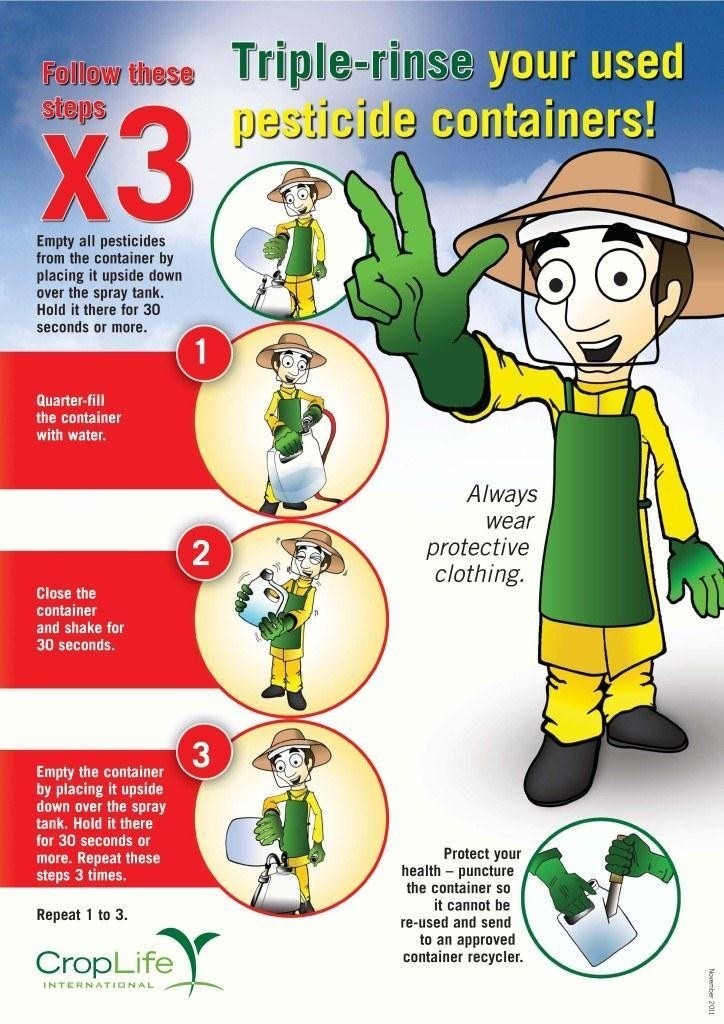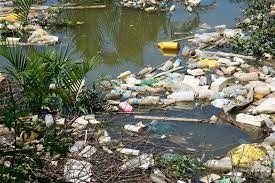Reducing the Risks Associated with Pesticide Exposure from Empty Pesticide Containers
By R. Mavuka, Crop Production and Molecular Technologies Division TRB
The Tobacco Research Board (TRB) encourages and promotes Good Agricultural Practices (GAP’s) in tobacco production. The proper handling and disposal of empty pesticide containers is one of the essential components of GAP’s, and if not managed correctly, these can be hazardous to both humankind and the environment. As the tobacco crop season starts, it is inevitable that empty pesticide containers will be found on farms. There is s a danger of inappropriate use of empty containers for storing food and water, which could result in pesticide poisoning.

Handling and Disposal
The handling and disposal of empty pesticide containers is an important aspect of the life cycle management of pesticides, which is often neglected – users tend to concentrate efforts at avoiding operator exposure. In contrast to direct exposure, when mixing or spraying pesticides, the risks from poor container management are usually less direct and often involve family members. Farmers must be aware that dangerous levels of pesticide residues may remain, even after their attempts to carefully clean containers using sand, soap or kerosene. Insecticide containers in some instances are used for hauling water from communal wells, thereby contaminating water supplies for an entire village. Incorrect storage of pesticide products left over from the season (in kitchens or bedrooms, in food stores and granaries) also pose high risk, especially where children and livestock have easy access.

Inappropriate disposal of empty pesticide containers can also be high risk. Containers abandoned in the environment can lead to pesticide pollution of soil, rivers, dams and
groundwater. Apart from direct pollution by discarding containers in or near water courses, burning or burying containers in the open field or shallow pits contaminates the water courses and food crops growing nearby. The containers buried in shallow pits are easily uncovered by animals or exposed by wind or rain. Furthermore, plastic containers are not biodegradable and the vacant space inside them and their low density may cause them to rise gradually to the surface, resulting in environmental pollution. Burying even rinsed pesticide containers at the place of use is not a good solution as it uses up scarce land and can be a danger to humans and animals.
Burning plastic pesticide containers in an uncontrolled fire will not destroy the hazardous components completely and may generate environmentally persistent toxic emissions (FAO, 2008). This means that pesticide products and containers should never be burnt on-farm or any other place of use. Only licensed high temperature incinerators and cement kilns with effective emission controls and the appropriate thermal processes should be used to destroy plastic pesticide containers and pesticide hazardous waste. In-order to safeguard human and environmental health, growers must follow the triple rinse procedure as outlined below.
How To Clean Empty Pesticide Containers?
The Triple Rinse Procedure

(Copyrighted: Croplife)
NB – Users should rinse containers immediately after emptying to reduce indirect exposure to others.
Once the empty pesticide container has been punctured, growers are encouraged to store the containers in a fenced-off storage facility.
Advantages of Cleaning Containers
- Correct cleaning of containers not only reduces exposure risk for humans and the environment but can save farmers money –an empty container allowed to drip into the spray tank could still contain 2% of its original contents. By rinsing and adding the rinsate to the tank, none of the pesticide is wasted.
- Recycling or disposal of a properly rinsed container should be less expensive and residual pesticide contamination will be sufficiently low for it to be classified as non-hazardous waste.
- Rinsing easier and requires less effort when the remaining small content is fresh and liquid, rather than left to congeal and harden.
- Properly rinsed containers may be recycled into other products rather than requiring their destruction as hazardous waste.
The General State
Pesticide container management poses a major challenge especially in developing countries. A survey of over 8,500 smallholders in 26 countries, conducted by the Food and Agriculture Organisation (FAO), found that most farmers were generally aware of the need for personal protective equipment (PPE) when using agrochemicals and knew simple steps to avoid direct exposure. However, areas such as the need for secure agrochemical stores and the proper disposal of used containers were identified as needing further training.
Zimbabwe like most other developing countries is prone to the risks posed by unsafe handling of containers because of the combination of high usage of acutely toxic insecticides and the reliance on surface water sources for drinking water in rural communities. This is compounded by the fact that there are no agrochemical container collection schemes unlike in most developed countries.

Growers are therefore encouraged to safeguard themselves, their families and the communities they live in through appropriate disposal of empty pesticide containers.
For more information, contact Kutsaga Research Station’s Crop Production and Molecular Technologies Division on VOIP 086 88002604 or email: tobres@kutsaga.co.zwor visit Kutsaga Research Station.
